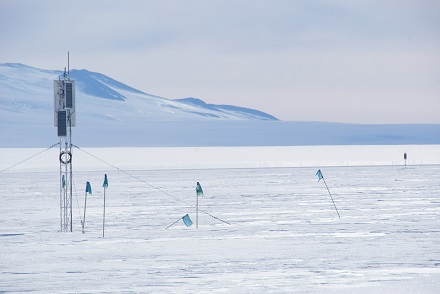
After the success of IceCube, especially at detecting neutrinos at the astrophysical energy frontier, eyes are pointed at even higher energies. At this energy frontier (1016 eV up to 1020 eV) neutrinos from the interaction of ultra-high energy cosmic rays in sources or with the cosmic microwave background are expected. In order to have a realistic chance of detecting those neutrinos, detectors of an effective volume of 100 times that of the already impressive 1 cubic kilometer of IceCube are needed.
While optical sensors such as deployed in IceCube deliver impressive results, the attenuation length of the ice sets a cost-prohibitive limit to the size of a detector equipped with photo sensors.
However, an interaction of a neutrino is not only followed by a flash of light that is measured by IceCube, but also by a short radio pulse. The attenuation length of radio signals in the ice is more than 500 meters, which means that radio antennas can be deployed sparsely and still instrument massive volumes.
The international community is gearing up to start building a large radio array. Small pathfinder arrays like ARA and ARIANNA have shown technological feasibility. The Radio Neutrino Observatory in Greenland (RNO-G) is first larger scale implementation of the radio technology. DESY plays a leading role in the software development, calibration and data analysis for RNO-G.




